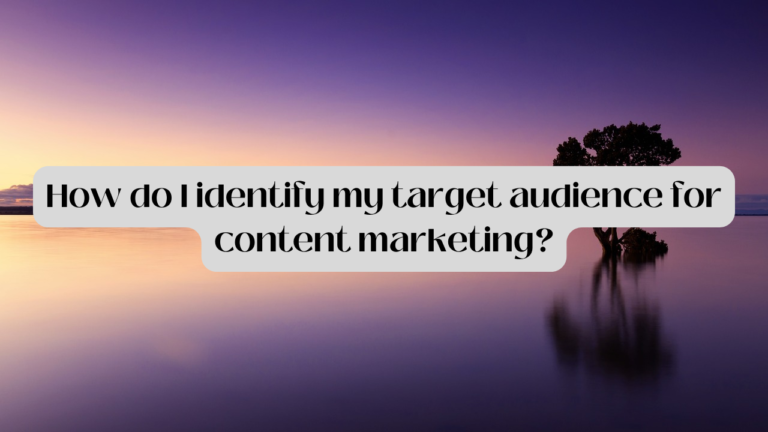How Does Content Marketing Differ From Traditional Advertising?
In today’s digitally-driven world, where information inundates every corner of our lives, the battle for consumer attention is fierce. Businesses and brands constantly seek effective ways to engage their target audience and build lasting relationships. Amid this dynamic landscape, two prominent strategies have emerged as stalwarts in the marketing arena: content marketing and traditional advertising. While both are geared towards achieving similar objectives, their approaches and impacts are starkly distinct. In this comprehensive article, we delve into the intricate nuances that set content marketing apart from traditional advertising, exploring their fundamental differences, benefits, and frequently asked questions to help researchers and practitioners navigate this evolving landscape.
Hooking Your Audience: The Content Marketing Advantage
In a world where consumers are becoming increasingly adept at tuning out blatant advertising messages, content marketing has emerged as a strategic beacon to captivate and resonate with audiences on a deeper level. Instead of relentlessly pushing products or services, content marketing aims to provide valuable, relevant, and informative content that addresses the needs, pain points, and interests of the target audience. By focusing on value creation, content marketing builds trust, credibility, and authenticity, transforming the audience into loyal advocates rather than passive consumers.

Fundamental Differences: Content Marketing vs. Traditional Advertising
1. Nature of Communication
Traditional advertising relies on interruptive and often one-way communication. It is designed to grab attention quickly and convey the essential message in a concise manner. In contrast, content marketing emphasizes storytelling and educative approaches, fostering a two-way dialogue that encourages engagement and interaction. The goal is to create a lasting impact rather than fleeting exposure.
2. Approach to Audience Engagement
Content marketing centers around building a genuine connection by addressing the needs and preferences of the audience. It aims to establish the brand as a reliable source of information, leading to organic engagement. Traditional advertising, on the other hand, seeks to create instant brand recognition through repetition and compelling visuals but may lack the depth necessary to foster a strong emotional connection.
3. Time Horizon of Impact
Traditional advertising often offers immediate results, generating short-term spikes in awareness or sales. Content marketing, however, operates on a more extended time horizon. It requires consistent effort to develop and disseminate valuable content, which gradually builds a loyal audience that can yield sustained, long-term benefits.
4. Metrics and Evaluation
Measuring the effectiveness of traditional advertising is often straightforward, with metrics such as click-through rates, impressions, and conversions taking center stage. Content marketing, on the other hand, demands a broader evaluation framework. Metrics like engagement rates, social shares, time spent on content, and even brand sentiment are vital to capture its holistic impact.
Frequently Asked Questions (FAQs)
Q1: Is content marketing suitable for all types of businesses?
A1: Content marketing is versatile, but its success hinges on understanding your audience and goals. B2B companies, service-based businesses, and industries where educating customers is crucial find substantial benefits. However, careful strategy alignment is essential for optimal results.
Q2: How can I measure the ROI of content marketing?
A2: ROI measurement for content marketing goes beyond immediate sales. Tracking engagement metrics, lead generation, customer retention rates, and even qualitative indicators like brand authority and audience loyalty contribute to a comprehensive ROI assessment.
Q3: Can content marketing and traditional advertising be integrated?
A3: Absolutely. Integrating both strategies can create a synergistic approach. Traditional advertising can create initial awareness, while content marketing nurtures leads, fosters trust, and sustains long-term relationships.
Q4: What are the key challenges in content marketing?
A4: Consistently producing high-quality content, maintaining relevance, and measuring the often intangible impact are challenges. A well-defined strategy, strong collaboration, and ongoing refinement can mitigate these hurdles.
Q5: Is content marketing more cost-effective than traditional advertising?
A5: Content marketing can offer cost advantages in the long run due to its lasting impact and potential for organic reach. Traditional advertising might yield quicker results, but it can also be more expensive, especially for sustained campaigns.
In Conclusion
The landscape of marketing has transformed dramatically, and as researchers, understanding the core distinctions between content marketing and traditional advertising is paramount. Learn more here. Content marketing’s strategic shift towards value-driven, audience-centric engagement has proven to be a game-changer. While traditional advertising still holds its place, content marketing’s potential to create lasting relationships, foster trust, and establish thought leadership cannot be overlooked. By recognizing these differences and integrating the strengths of both strategies, businesses can craft campaigns that resonate deeply with their audiences and drive sustainable success.





